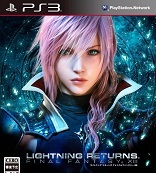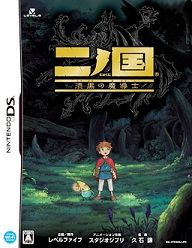Everquest II: Age of Discovery
PC
Reviewed: 1/13/2012
Everquest II celebrated its seventh anniversary last November with the announcement that it would be implementing a Free to Play structure, and that it would be releasing a new expansion. Indeed, the game has changed a lot since it first came out, and as promised the new expansion and planned changes would be a strong step in a welcome addition to the franchise. How did these changes, now implemented, pay out? In an admittedly muddled fashion. The game is stronger than it ever has been thanks to Live Update 62, but Age of Discovery may also be the weakest of the game’s eight full expansions.
Those who have never played EQ2 will benefit greatly from the game’s new “Free to Play, Your Way” service. There are three levels of service: Basic, Silver, and Gold. Silver is a slightly beefed up Basic after having paid a $5.00 fee; Gold is the subscription server that has been in play for a while. There’s some heavy restrictions on Basic and Silver accounts: limited character slots, only four races available to starting players, and access to only 8 classes. The higher tiers of gear cannot be equipped under Basic of Silver, there’s a cap on how much currency a character can hold based on level, and they can’t use the brokers. The game’s cash shop gives services that allow the ability to permanently unlock races (in blocks of three) or classes (individually).
That said, players that are seriously considering unlocking things via the cash shop may be better off simply subscribing. The cost of these services ultimately becomes amazingly expensive, and can easily nickel and dime the unexpected player. Unlocking every class available to a Gold subscriber would set a player back $120. Unlocking every race available to a Gold subscriber is a little less expensive, at $37.50 . (The Freeblood race, mysterious half-vampires that can walk in daylight, cost $20 all by themselves.) In contrast, a player can get a year’s worth of Gold membership for as cheap as $119.89 for an entire year, have access to all of those races and classes (minus Freeblood), no limitations to what gear they can be worn (without paying $0.30 to unlock a single piece of equipment), no limitations to how many times they can use the in-game Broker without needing to purchase the right to (At $0.50 per 10 transactions), and no limitations on sending in-game mail.
Live Update 62 did reinvent the city of Freeport, much for the better. For the longest time, the city had become this neglected mess of multiple small zones, hideous in-game scenery, and easily forgettable questlines. No longer is this the case – the city looks amazing, feels evil, and is a new hub of adventure in its own right. Some of the new racial and class quests are simply fun to explore and play.
The newest update is an ambitious one, and one that will likely bring a lot of new blood into the game. So why does this reviewer think that Age of Discovery is likely the game’s weakest expansion of the 8 that have come out so far? Simple: there is not a lot of new content, and what is in this pack seems targeted at newer players, especially players that would not normally consider purchasing the expansion under its new Free to Play model.
The expansions biggest offering is the new Beastlord Class. A Scout class, it uses monk weaponry, chain armor, and collects pets to aid it in journeys far and wide. It’s an amazingly competent soloing class, that has a different style of play. Each pet, or “warder”, requires leveling in its own right, and as the player progresses with the class they can gain the ability to tame even more powerful and unique pets. It is arguably not an easy class to play compared to other damage dealing classes, but is robust in how it can survive in both solo and small party play. Its place in raids has yet to be set, but it will likely play the role of a DPS class like many other scouts.
Another major pull is the new Dungeon Maker, which allows players to create their own dungeons, or play that of friends. (Those who do not buy the expansion can participate in other dungeons, but can not create them or spend the tokens they win on them.) The set-up is very straightforward: the player and his party select a dungeon. Each player then chooses a pre-generated monster character from the ones they have access to. They make their way through the dungeon, getting credit for each monster they kill. At the end of the dungeon, the exp they gained goes to their main character and they gain Tokens to spend on new classes to play in the dungeons, new items to place in the dungeons, or the chance at new or special equipment. These dungeons are a fun diversion from the game, but they seem to take away from the meat of the game itself. While the choice to use pre-set characters in these dungeons makes since due to the way things scale in this game, most players simply want to be behind their own avatar while doing things.
The Age of Discovery also grants the right to 20 new Alternative Advancement points, for a total of 320. However, no new slots or abilities were released to purchase with these points. This creates an odd situation where a player may choose to flesh out a tree they hadn’t finished before, or simply dump these points in a crafting skill tree line.
From there, the expansion starts to show its lack of substance. One can now purchase Mercenaries, which makes soloing classes a fair bit easier. The selection is extremely limited, however, and would benefit new players that need help far more than more established players who have friends (or just as likely, another account) to play with. Certain tiers of gear can be “reforged”, but in most cases this differences are minor in application and most notable in cosmetic affect. Tradeskill Apprentices allow for the research of new recipes, but most of these recipes are simply not needed and the ones that are worth having have very high and unusual ingredient requirements to them. The fun of babysitting an NPC once a day is also quickly lost once the novelty of new shiny things loses its luster.
And that’s it. No new areas to explore. No new raid instances.
This might not be a large problem if not for one unusual change to things. A lot of these benefits, especially the Mercenaries, benefit new players. It would make sense that they would want to purchase this expansion, and have access to everything. However, when Everquest II went to Free to Play, Sony Online Entertainment changed a policy that up to that point had made a lot of sense: buy the newest expansion pack, and get all other expansion packs before it. Players will need to buy Age of Discovery, as well as the popular end-game expansion pack Destiny of Velious.
This creates an unusual paradox. The newest expansion really caters to newer players and those pushing to the level cap of 90 more than it does those that are already there. It offers very little to those who have been subscribed, and would have benefited greatly from new areas to explore. Furthermore, newer players who purchase this expansion will still need to purchase another expansion at a later date, should they decide to stick around or subscribe. This makes this expansion of questionable value to those who have been consumers of this product the longest.
Ultimately, those who have ever been curious about this game or how it has changed since it was first released would do well to give it a try now. It’s free (with restrictions) and has a rich lore and feel to it. In this, the team behind Everquest II has succeeded amazingly. Sure, the purchasing options for races and classes becomes hefty and questionable when compared to long-term subscription, yet all together this new change feels very promising and will likely be smoothed out further as time goes on. With this change however, the Age of Discovery expansion begs to ask: “Why did you name this expansion after the one thing it lacks: the chance to discover new things? Why am I paying forty dollars for something most games would have given me with the cost of a subscription, as they want me to level up and stick around?”
-Tim Olsen
| Score Breakdown | ||
| Overall Good Out of 10 See our Review Criteria |
Gameplay | Good |
| Story | Good | |
| Graphics | Average | |
| Sound/Music | Average | |
| Replay Value | Great | |
| The Verdict: Good | ||








